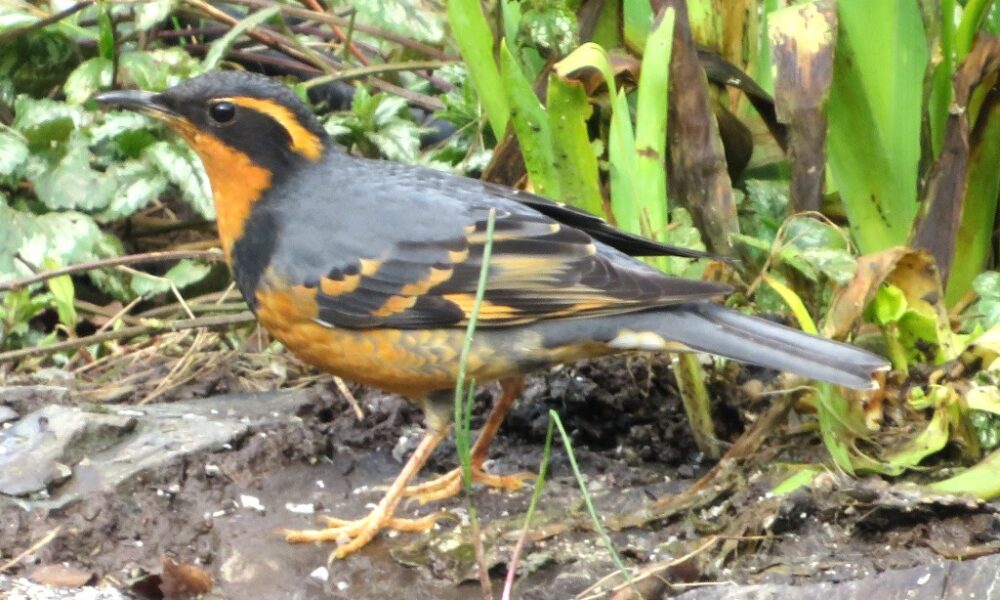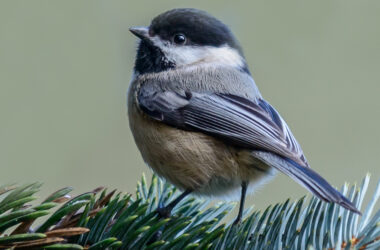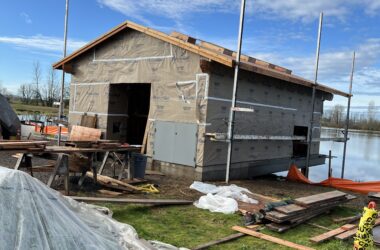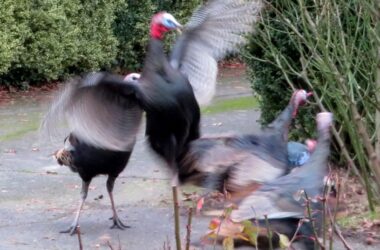The varied thrush does not wander much. Its native range stretches from Alaska south along western Canada through Oregon into California. It can be found as far east as Idaho but much of the rest of the continent rarely gets a view of this colorful bird.
If you live in the upper midwest, one or two varied thrush might show up between October and May, but not every year. So, of course, Sibley put it on the cover of his western field guide.
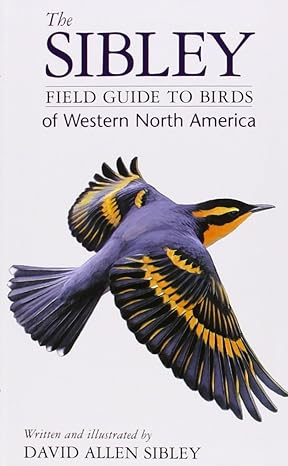
There are dozens of species that we see along the Pacific Coast that aren’t found often east of Denver, but almost none are close to being as flamboyant as our varied thrush.
All this winter there have been one to three varied thrush poking around our garden in Salem. Sometimes only a few feet from a window. This bird is a cousin of our abundant and familiar American robin — both are ground-feeding thrushes. They like forest habitat, eat a wide variety of food from earthworms to hawthorn berries.
In winter the varied thrush may be seen on lawns or soccer fields, but normally near the edge where there is nearby cover or a thicket. This bird is not nearly as public nor as obvious as the robin. Here in Oregon its breeding range is in dense forests — coastal, the Coast Range, the Cascades, mountains of northeast Oregon. Think conifers and shade. This is not a bird likely to be seen on sagebrush, or atop a cattail.
With a sixteen inch wingspan, this bird is a tiny fraction smaller than our robins. Its voice, however, is quite different.
Now that spring is nearing, a varied thrush near you might be calling in the morning. It is not a melodic tune, nor a set of musical whistles. The call of this bird is a high, thin, almost screeching whistle. A single note extended for a few seconds, then silence. The note may be repeated, but never rapidly the way chickadees or bushtits chatter to one another. A century ago ornithologist Arthur Allen described this thrush’s voice: “as perfectly the voice of the cool, dark peaceful solitude which the bird chooses for its home as could be imagined.”
The varied thrush nests in the forest. The female does much of the construction of this open cup nest. It is generally sited at the base of a limb next to the trunk. It is usually between five and twenty feet above the ground. Often there will be three or four eggs. The female broods and incubates, the male brings the food. There may be two broods per year if the food supply is adequate. The eggs are incubated about 12 days. The nestlings usually fledge at about two weeks of age, not very good at flying yet.
Go here to listen to varied thrush’s voice: https://www.allaboutbirds.org/guide/Varied_Thrush/
For information about upcoming Salem Audubon programs and activities, see www.salemaudubon.org, or Salem Audubon’s Facebook page.
Harry Fuller is an Oregon birder and natural history author of “Freeway Birding” and the newly-published “Birding Harney County.” He is a member of the Salem Audubon Society. Contact him at [email protected] or atowhee.blog. His “Some Fascinating Things About Birds” column appears regularly in Salem Reporter.
SUPPORT OUR WORK – We depend on subscribers for resources to report on Salem with care and depth, fairness and accuracy. Subscribe today to get our daily newsletters and more. Click I want to subscribe!
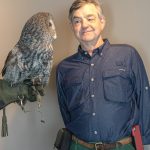
Harry Fuller is an Oregon birder and natural history author of three books: “Freeway Birding,” "Great Gray Owls of California, Oregon and Washington," and "San Francisco's Natural History--Sand Dunes to Streetcars." He leads birding trips for the Malheur Field Station. He is a member of the Salem Audubon Society, and leads bird trips locally. Harry has just published a new book, BIrding Harney County.

